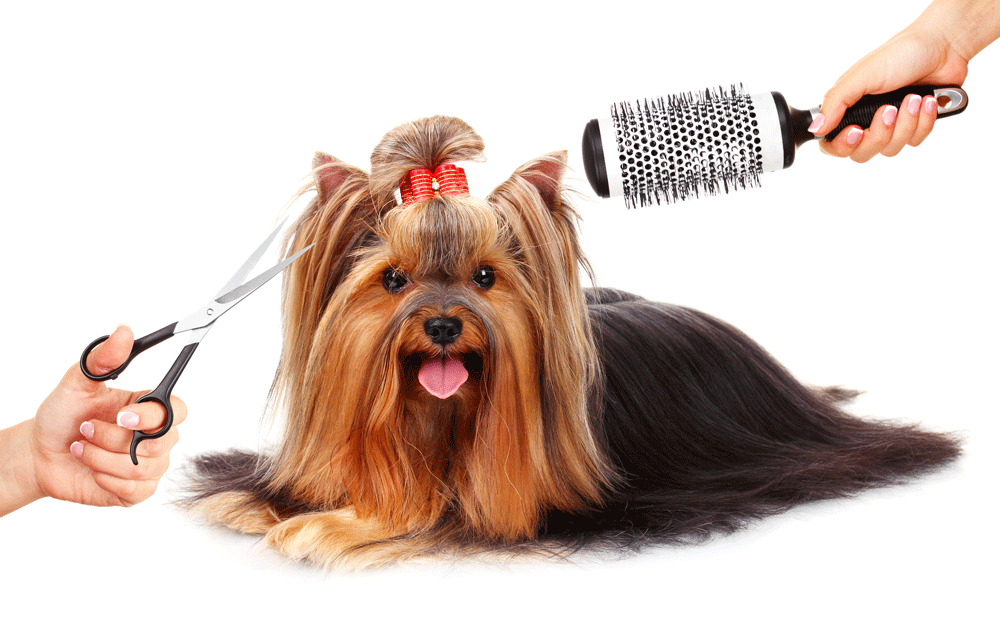How Often Should You Groom Your Dog?
Grooming is more than just making your dog look good—it's essential for their health, comfort, and overall well-being. But one of the most common questions pet parents ask is, “How often should I groom my dog?”
The answer depends on several factors including your dog’s coat type, breed, age, and even their lifestyle. Some dogs may only need monthly maintenance, while others require weekly—or even daily—care to prevent mats, shedding, and skin issues.
In this guide, we’ll break down how often to groom your dog based on coat type, and offer tips on what grooming includes and how to maintain a healthy routine.
What Does Dog Grooming Include?
Before we dive into timelines, let’s look at what grooming actually involves:
Brushing – Detangles hair, removes loose fur, and stimulates the skin
Bathing – Cleans dirt, dander, and oil buildup
Hair trimming or clipping – Maintains coat length and reduces mats
Nail trimming – Prevents overgrowth and paw pain
Ear cleaning – Reduces risk of infections
De-shedding treatments – For heavy shedders
Teeth brushing – Promotes dental health
Grooming isn’t just about hair—it’s full-body care that keeps your dog feeling fresh and healthy.
Grooming Frequency by Coat Type
Every dog is different, but your dog’s coat is the biggest indicator of how often they need grooming. Let’s explore:
1. Short-Haired Dogs
Examples: Beagles, Boxers, Dobermans, Pit Bulls
Grooming Needs: Low
Brushing: Once a week
Bathing: Once every 1–2 months
Haircuts: Not required
Nails & ears: Every 4–6 weeks
Short-haired breeds shed but are low-maintenance when it comes to tangles or trimming. A good brushing session weekly helps control loose hair and keeps their coat shiny.
2. Medium-Haired Dogs
Examples: Golden Retrievers, Border Collies, Australian Shepherds
Grooming Needs: Moderate
Brushing: 2–3 times per week
Bathing: Every 4–6 weeks
Haircuts: Every 6–8 weeks if trimming is needed
Nails & ears: Monthly
These dogs often have double coats that shed heavily, especially seasonally. Regular brushing is key to reducing mats and keeping undercoats healthy.
3. Long-Haired Dogs
Examples: Shih Tzus, Afghan Hounds, Lhasa Apsos, Yorkshire Terriers
Grooming Needs: High
Brushing: Daily or every other day
Bathing: Every 3–4 weeks
Haircuts: Every 4–6 weeks
Nails & ears: Every 3–4 weeks
Without frequent grooming, long-haired dogs are prone to mats, tangles, and skin irritation. A professional groomer visit every month is ideal to maintain style and comfort.
4. Curly or Wavy-Coated Dogs
Examples: Poodles, Doodles, Bichon Frises
Grooming Needs: Very High
Brushing: Daily
Bathing: Every 3–4 weeks
Haircuts: Every 4–6 weeks
Nails & ears: Every 3–4 weeks
Curly coats trap dirt and don’t shed much, but they mat easily. These dogs benefit from regular trims and brushing. Skipping grooming can lead to painful matting and skin problems.
5. Wire-Haired Dogs
Examples: Terriers, Schnauzers
Grooming Needs: Moderate to High
Brushing: 2–3 times per week
Hand stripping or clipping: Every 6–8 weeks
Bathing: Every 4–6 weeks
Nails & ears: Monthly
These coats are unique and need special care, especially if you maintain their traditional texture via hand-stripping.
Signs Your Dog Needs Grooming Sooner
Even with a schedule, be alert for signs that your pup needs grooming now:
Excessive scratching or licking
Visible mats or tangles
Smelly coat
Dirty ears or discharge
Long nails clicking on the floor
Dull or greasy fur
If you notice any of these, it’s time for a quick grooming session—or a trip to the groomer.
Grooming Tips for All Dog Parents
Start young: The earlier your dog gets used to grooming, the easier it becomes.
Use the right tools: Choose brushes, combs, and shampoos suited to your dog’s coat.
Reward and reassure: Treats and positive words go a long way in making grooming enjoyable.
Stick to a schedule: Routine grooming is better than emergency cleanups.
Don’t forget nails and ears: These often get overlooked but are vital for health.
Final Thoughts
So, how often should you groom your dog? It depends on their coat type, breed, and lifestyle—but whether it’s a weekly brushing or monthly haircut, regular grooming is a must.
It’s not just about aesthetics. Grooming helps you spot early health problems, prevents matting, reduces shedding, and builds a stronger bond between you and your dog.
If you’re ever unsure, consult a professional groomer who can guide you on the perfect grooming plan tailored to your pup’s needs.


